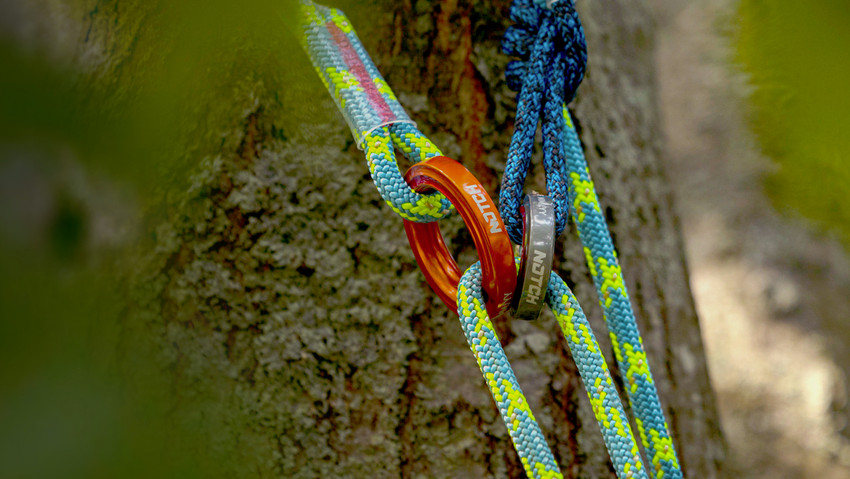FAQs: Wear Safe Steel and Aluminum Friction Rings
Getting to know our Wear Safe Steel and Aluminum Friction Rings.
At Notch, our goal is to design and develop new products that make professional arborists’ lives easier. In this case, we’ve developed the industry’s first wear indicator- a safety feature that makes it easier for arborists to inspect wear and possible damage.
We’ve provided the answers to some commonly asked questions that you may have about our Wear Safe Friction Rings.
What is the purpose of a friction ring?
Friction rings are commonly found installed into friction/cambium savers or canopy anchors. In addition, they are great choice for a harness bridge as the primary rated attachment point.
The purpose of the friction ring is to reduce rope friction during climbing as opposed to natural crotch anchoring and prevent rope on rope contact. They are metal and have a smooth surface, allowing the rope to move through them with minimal friction.
A typical friction saver will include two ring sizes, allowing the user to retrieve the saver from the ground.
Why do friction rings wear out?
Continuous movement of rope, particularly one that’s soiled or heavily worn, will eventually cause surface wear, which can lead to developing a groove over the contact area. This reduces the ring’s strength rating.
Other metal attachments can also lead to surface wear.
Are Wear Safe Rings rated?
Yes, they have a MBS of 30kN (6,744 lbs.)
What size are the Notch rings and what do the measurements mean?
The rings are available in two sizes:
Size = inside diameter (in mm) x outside diameter (in mm)
What sets this product apart from other friction rings in the industry and why?
Our Wear Safe Steel and Aluminum Friction Rings feature an industry-first wear indicator which alerts the user when they need to be replaced. This indicator can lead to increased safety through improved ease of inspection.
These rings have a 33% larger bend radius which makes them more rope friendly by reducing the angle of the rope passing through them. A sharp bend radius can decrease a rope's strength and subject it to premature wear or damage.
What is the difference between the steel and aluminum versions? How do I choose?
Steel is a harder metal than aluminum, which will provide increased resistance to rope abrasion. Steel is also a heavier metal than aluminum.
Therefore, users who prefer a lighter weight product will benefit from the aluminum composition.
The lifespan of ring will depend on frequency of use, type and condition of rope used and environmental conditions.
When should I retire my friction ring/saver?
Steel or Aluminum Rings or friction savers should be retired when the wear pattern reaches the red colored indicator.
How easy is this product to use?
On a scale of 1 (very easy) to 5 (difficult, takes practice and calibration), this product is a 1.

